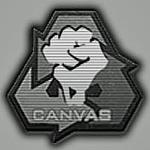Veterans of the uprising in Serbia, which overthrew President Slobodan Milosevic, are running workshops for opposition groups around the world on how to bring down a dictator.
On the outskirts of new Belgrade - among Communist-era tower blocks - lies the anonymous-looking office the Centre for Applied Nonviolent Action and Strategies [CANVAS]. It teaches the science behind forced regime change.
Inside, Srja Popovic runs a School of Revolution.
"Our original idea was to help groups from Zimbabwe and Belarus in 2003 because they were inspired by the Serbian Revolution. It started as a hobby actually, it wasn't a full time job. And then through time more request were coming, more groups were inspired, the curriculum became more serious," said Popovic.
Popovic was a leader of the student group ‘Otpor.' It played a key role in the 2000 revolt that ousted Milosevic. The tactics he learned at that time are now being taught to opposition groups around the world.
A film has been made of the struggle. Bringing Down a Dictator now forms part of the Canvas curriculum.
"Normally, Canvas workshops are seven days. First you need to understand that you need a vision of tomorrow, then you teach people the basic principles of success and non-violent struggle," said Popovic. "These are unity, planning, and non-violent discipline, especially stressing the importance of staying non-violent."
Opposition strategies and techniques
Canvas held workshops with Egyptian opposition groups in 2009, including the April 6 movement that played a key role in the overthrow of the Mubarak regime two years later.
Popovic admires the discipline the protesters showed in facing down the government.
"They would invite people to come on [Tahrir] Square from five different places and the police will go and secure these places. But in the meantime they will organize the communication so they will smuggle themselves through the labyrinth of streets and appear behind the military," said Popovic. "Another very important thing is they were so good at building up unity. They gave up their individual symbols of their own groups and came out only with the flag of Egypt."
Since the uprisings in Tunisia and Egypt, traffic to the Canvas website has soared - with tens of thousands of downloads of the organization's free guide on staging protest.
Merchandise, workshops are popular
Canvas books have been translated into seven languages - the Farsi and Arabic versions are particularly popular. The clenched fist - the symbol of the Serbian protesters - has been adopted by protestors from Kenya to Belarus.
For Popovic, the workshops make for a hectic schedule.
"We travel anywhere from Asia to South America, to the Pacific, Oceania," said Popovic. "We were working with places like West Papua, Fiji, so I mean it's really exotic when it comes to the travel itinerary. But in practice you sometimes work in a hotel, sometimes you work in a classroom, sometimes you work on the beach - it was beaches with the Maldivians, so I mean it can be really thrilling."
It's a long way from the protests that filled Belgrade's Revolution Square.
A decade on, the barricades have been replaced with pavement cafes; the protest chants with the tinkling of fountains.
Hard lessons to learn, teach
But not everyone believes that the Serbian model should be exported overseas.
Miljenko Dereta is director of the non-governmental organization called Civic Initiatives.
"It was not a revolution, first of all, it was a change of one personality. And very naively, I may say romantically, we thought that changing one person changes the system," said Dereta. "The system is still present. And we're still fighting for the change of the system."
Popovic agreed that bringing down a dictator is just the start. "Removing the bad guy is sometimes easier than building the democratic institutions."
It's a lesson, Popovic said, that protesters across the Arab world will soon learn.
